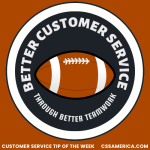
When my daughter was in elementary school, she had a teacher who gave the kids an assignment – write instructions on how to make a peanut butter and jelly sandwich.
Simple enough, right?
When the assignment was turned in, the teacher stood at her desk, pulled out a loaf of bread, a jar of peanut butter, and a jar of jelly, and she began to read the first student’s instructions out loud – “Put peanut butter on bread.”
So, the teacher put the loaf of bread in the center of her desk, and she slammed the jar of peanut butter on top of it. Some students laughed; others sat in disbelief.
The teacher began to read the second student’s instructions – “Place a slice of bread on a plate, and spread peanut butter on the bread.”
The teacher opened the bag with the loaf of bread, pulled out a slice, took a paper plate off the shelf, and put the slice of bread on the plate (so far, so good!). Then she unscrewed the top of the peanut butter jar, put her hand in, grabbed some peanut butter, and spread it by hand on the slice of bread.
This was met with equal groans of “Ewwww!” and “Gross!”
The teacher was illustrating how the kids need to be thorough in their descriptions/instructions. When explaining what to do or how to do something, we can’t assume that the person reading what we’re writing will make the correct assumptions about what we mean. If we want them to be clear, we need to be specific enough to be understood correctly.
Think about the instructions you give co-workers and customers on how to do a task – how to complete a form, sign-up for a service, submit documentation, provide you with information. If you want it done a specific way, you have to be very specific in providing instructions.
Make sure you get what you want in the form you want it from others. Don’t assume others will interpret general instructions the same way.
Learn from this PB&J Customer Service Lesson.
Signup for FREE Tips! Contact Us More Resources for You Visit Our Home Page






















